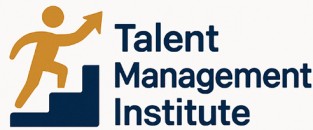
Understanding Workforce Strategy Maps
Deciphering Workforce Strategy Maps
Understanding workforce strategy maps is critical for organizations aiming to achieve their long-term business goals. These maps serve as vital planning tools that delineate how a company can align its current workforce capabilities with future business needs. At its core, a workforce strategy map is a data-driven approach that integrates skills-based planning and talent management to address skills gaps and succession planning. Effective workforce planning involves analyzing the current workforce and strategic workforce needs to support organizational development and growth. This dynamic process requires companies to assess their business objectives and strategically map talent requirements. By drawing on talent mapping techniques and scenario planning, organizations can ensure they have the right employees in place to meet future demands. Leadership plays a critical role in formulating these strategy maps by fostering a culture of continuous development. Incorporating key insights into talent and skills will assist in strategic decision making, ensuring that workforce strategy aligns with the overall business strategy. By leveraging comprehensive mapping processes, organizations can better understand and plan for their current and future workforce needs. This strategic alignment is essential for companies to remain competitive and sustain their growth trajectory. For more insights into optimizing modern workforce allocation, explore this link.Key Components of a Workforce Strategy Map
Building Blocks of a Comprehensive Strategy Map
To craft a successful workforce strategy map, several critical components must come into play. Each of these elements functions as a building block, contributing to the overall effectiveness of talent management and strategic workforce planning. The organization's ability to seamlessly integrate these components will determine its readiness for future demands.- Current Workforce Analysis: Understanding the composition of the current workforce is a pivotal first step. This involves analyzing demographics, skills gaps, and the distribution of talent within the organization. With a data-driven approach, companies can identify areas needing development and tailor their workforce planning to address these gaps efficiently.
- Scenario Planning: By anticipating future workforce challenges, companies can devise strategic plans that account for various potential scenarios. This involves evaluating potential changes in the business landscape and the skills required to meet evolving business goals. Scenario planning ensures that organizations remain agile and proactive in their talent mapping endeavors.
- Alignment with Business Goals: An effective workforce strategy map aligns closely with organizational objectives and long-term business goals. Whether it's enhancing leadership capabilities or focusing on skills-based development, each element should mirror the broader vision of the company, ensuring that talent management efforts are supportive of strategic business objectives.
- Integration of Planning Tools: Leveraging the right planning tools is essential in strategy mapping. These tools should support data collection, analysis, and scenario planning, enabling decision-making that is both informed and strategic.
- Leadership and Succession Planning: Critical to any workforce strategy is the identification and development of future leaders. Succession planning not only supports current leadership needs but also ensures that the organization is prepared for long-term leadership requirements. A strategic emphasis on leadership development can significantly impact the organizational capacity to adapt to future challenges.
Aligning Workforce Strategy with Business Objectives
Harmonizing Workforce Strategy with Business Goals
Aligning your workforce strategy with business objectives is a critical step in ensuring that your organization remains competitive and agile. This alignment is not just about matching numbers or filling positions; it’s about creating a strategic workforce that supports the long-term vision and mission of your company.
To achieve this, organizations need to engage in comprehensive workforce planning. This involves understanding the current workforce capabilities and identifying skills gaps that could hinder the achievement of business goals. By doing so, companies can focus on talent development and succession planning, ensuring that they have the right skills in place for future needs.
Strategic workforce planning also requires a data-driven approach. Leveraging data allows for more informed decision making, helping to map out scenarios and predict future workforce needs. This is where talent mapping becomes essential, as it helps in identifying critical roles and potential leaders within the organization.
Leadership plays a pivotal role in this alignment process. Leaders must communicate the business objectives clearly and ensure that the workforce strategy is designed to support these goals. This involves not only planning for the current workforce but also preparing for the future workforce by investing in skills-based training and development programs.
Incorporating technology into the planning process can further enhance the effectiveness of your strategy maps. Advanced planning tools can provide insights into workforce trends and help in optimizing workforce allocation. For more insights on aligning workforce strategies with business objectives, you can explore career opportunities with CSUSA from a talent management perspective.
Challenges in Implementing Workforce Strategy Maps
Identifying Implementation Challenges
Implementing workforce strategy maps within an organization is no small feat. It requires comprehensive planning, keen insight into the organization's business goals, and a strategic approach towards overcoming potential challenges. Below are critical obstacles organizations may encounter:- Complex Planning Process: Developing a workforce strategy map involves integrating workforce planning tools, mapping future workforce requirements, and identifying current skills gaps. Any misalignment in these elements can disrupt the organization's strategic goals and future business plans.
- Cultural Resistance: Employees, leadership, and stakeholders may resist changes introduced by workforce strategy mapping. Ensuring that all levels of the organization understand the importance and benefits of strategic workforce planning is crucial to overcoming this resistance.
- Data Challenges: Accurate and data-driven decision-making is pivotal in talent mapping and strategic workforce planning. Companies often face challenges in collecting, analyzing, and interpreting relevant data critical for workforce development and succession planning.
- Resource Allocation: Allocating the necessary resources, including time, workforce, and financial investment, is fundamental for the effective execution of workforce strategy maps. Organizations must prioritize these resources to align with their strategic business objectives.
- Leadership Commitment: Strong leadership is essential for successful workforce strategy implementation. Leaders must be engaged and committed to aligning the strategy map with organizational goals and guiding the company through the necessary changes.
- Adapting to Change: Frequent changes in market conditions or business direction can impact workforce planning. Organizations need effective scenario planning to adapt the workforce strategy map promptly while maintaining alignment with business goals.
The Role of Technology in Workforce Strategy Mapping
Integrating Technology into Workforce Strategy Mapping
In today's rapidly evolving business landscape, technology plays a critical role in shaping effective workforce strategy maps. As organizations strive to align their workforce planning with business objectives, leveraging technology becomes indispensable. It not only enhances the mapping process but also ensures that the strategy remains agile and responsive to changes.
One of the primary benefits of integrating technology into workforce strategy mapping is the ability to harness data-driven insights. By utilizing advanced data analytics tools, companies can gain a comprehensive understanding of their current workforce, identify skills gaps, and forecast future workforce needs. This data-driven approach enables more informed decision-making, ensuring that the strategic workforce plan aligns with long-term business goals.
Moreover, technology facilitates scenario planning and succession planning, two critical components of a robust workforce strategy. Through sophisticated planning tools, organizations can simulate various business scenarios and assess the potential impact on their workforce. This proactive approach allows companies to prepare for future challenges and opportunities, ensuring that they have the right talent in place to meet their strategic objectives.
Another significant advantage of technology in workforce strategy mapping is its ability to streamline the planning process. Automated systems can efficiently manage and analyze large volumes of data, reducing the time and effort required for manual analysis. This efficiency not only accelerates the planning process but also enhances the accuracy and reliability of the strategy map.
Furthermore, technology supports the development of skills-based strategies by providing insights into employees' current skills and potential areas for development. This information is crucial for talent management, as it allows organizations to tailor their training and development programs to address specific skills gaps and prepare their workforce for future challenges.
In conclusion, the integration of technology into workforce strategy mapping is not just a trend but a necessity for modern organizations. By leveraging data-driven insights, enhancing scenario planning, and streamlining the planning process, technology empowers companies to create dynamic and effective workforce strategies that align with their business goals.













